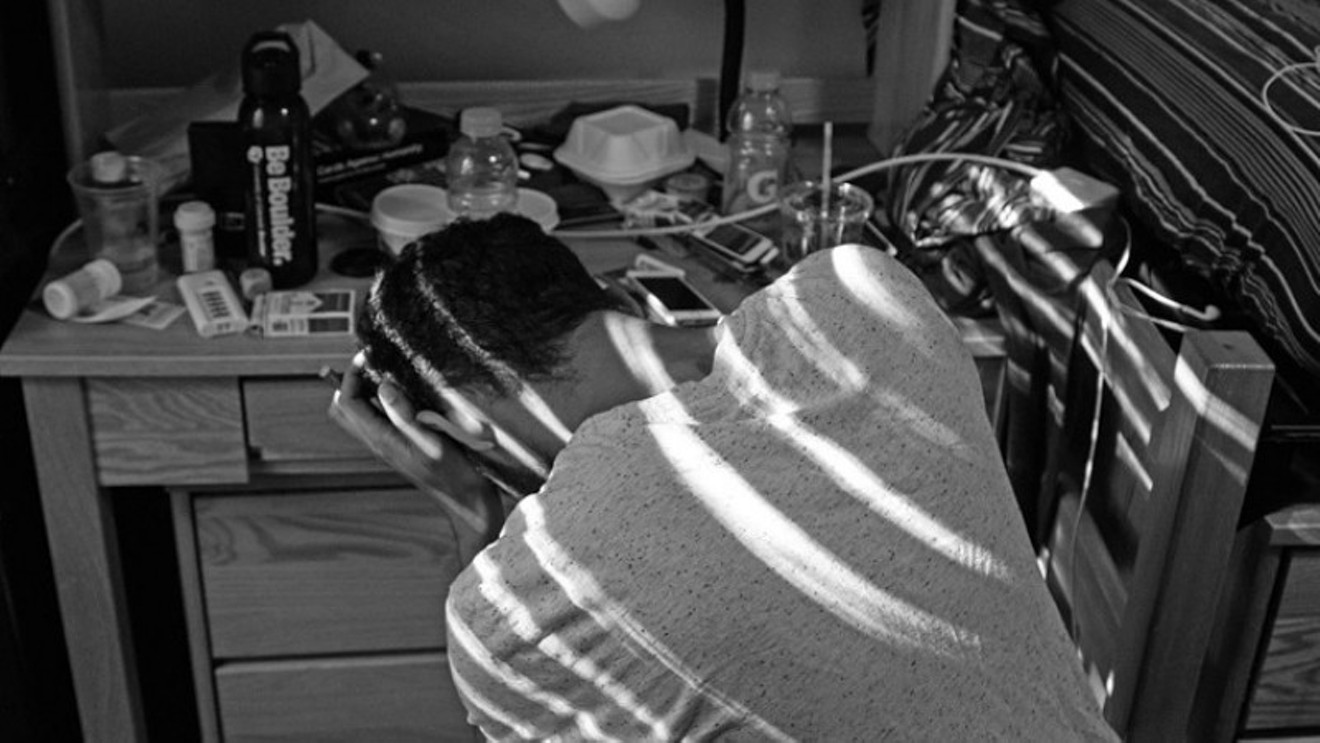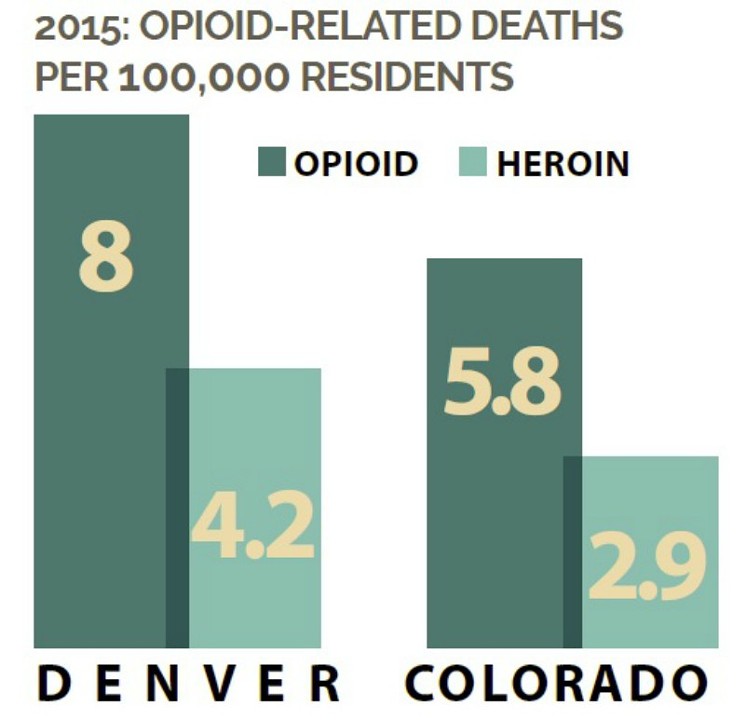"Denver Needs Assessment on Opioid Use," a new report from Denver Public Health and Environment, is filled with revelations about the scope of a growing problem in the Mile High City. And plenty of them qualify as genuinely startling.
One reason the report feels more trenchant than many previous attempts to grapple with the issue is the input of actual opioid users. Thirty individuals were interviewed as part of the analysis, and while they skewed Caucasian and male (most identified as white, and 23 of the subjects were men), they represented an appropriately wide age range (twenty to sixty) and included users of multiple substances — although everyone who took part was injecting heroin.
Here are the facts and observations that stood out most to us, illustrated with graphics from the report, followed by the authors' recommendations and the document link.
Number 1: The 2017 fatal overdose cluster
In 2016, at least five clients of the Harm Reduction Action Center, Colorado's largest syringe exchange program, died of overdoses. But during a two-week period in January 2017, six HRAC clients lost their lives under the same circumstances.
Number 2: The OD-death count could easily have been higher
The increasing availability of Narcan, the commercial name for Naloxone, a substance that can reverse the effects of an overdose, has been a lifesaver in Denver. In 2016, the Harm Reduction Action Center reported that 187 client overdoses were reversed. That number rose substantially the following year. During the first ten months of 2017, overdose reversals were conducted for 234 HRAC clients.
Number 3: The 21st-century overdose death count in Colorado is well into five figures
From 2000 to 2015, the number of Coloradans to die of drug overdoses was 10,552, and it's continued to rise since then. Moreover, opioid-related overdoses tripled during that same period.
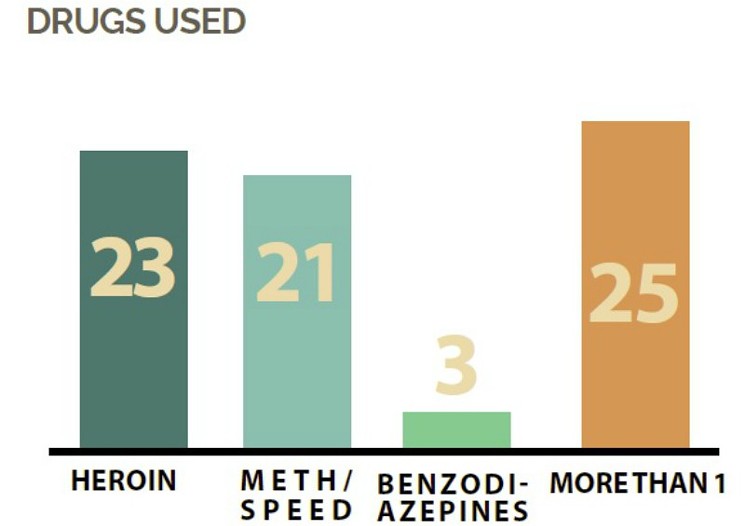
This graphic shows the various drugs used by the thirty opioid users interviewed for the report.
Denver Public Health & Environment
In 2016, the Denver coroner's office reported 173 overdose casualties, with 103 involving opioids and fifty of them connected to heroin. The final total for last year is worse: 201 overdose fatalities, of which 110 had a tie to opioids.
Number 5: For many opioid users, a first overdose is just the beginning
More than two-thirds of the participants in the report said that they had overdosed at least once. But nearly all of them revealed that they'd survived multiple ODs, often thanks to Narcan use — and these near-death experiences didn't appear to have any direct influence on whether or not they decided to seek addiction treatment.
Number 6: The practicality of injecting meth
The majority of report participants were homeless, and many expressed a preference for staying on the streets, as opposed to bunking in a shelter, when the weather permitted — and even when it didn't. Earlier this month, Harm Reduction Action Center executive director Lisa Raville told us about the prevalence of injection-drug users in this situation shooting meth on cold nights so that they could keep moving and avoid freezing to death — but that's not the only reason for doing so that's mentioned in the just-released document. Other motives include reducing the risk of being attacked or robbed, as well as avoiding trouble with police officers who might roust them for violating curfew, trespassing or camping illegally if they fell asleep.
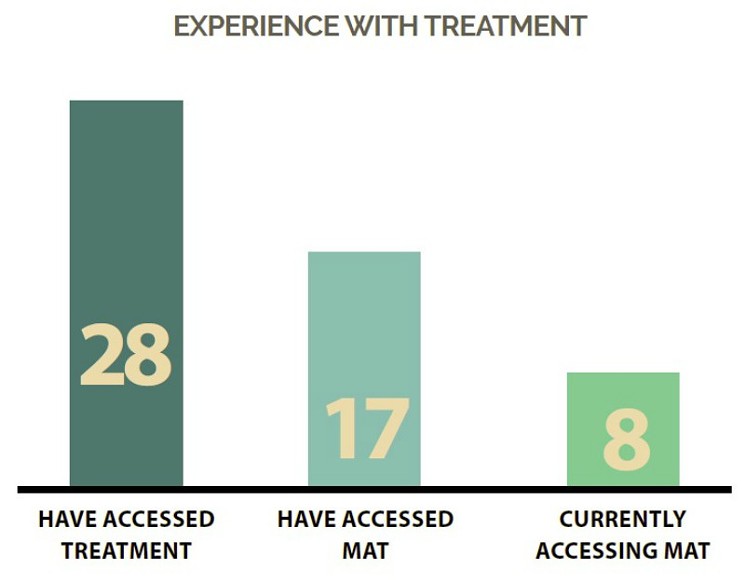
This graphic depicts the number of the thirty report participants who've tried to get treatment for their addiction. "MAT" stands for "medication-assisted treatment."
Denver Public Health & Environment
The antipathy of many opioid users toward shelters is multi-faceted. Among the complaints: Shelters don't accommodate couples, are sometimes so crowded that people have to sleep shoulder-to-shoulder on the floor, have bathroom facilities that reek and are unspeakably filthy and potentially put those inside at the mercy of sexual predators.
Number 8: Some treatment centers will reject anyone who smokes marijuana
Cannabis may be legal for adult consumption in Colorado, but interviewees reported that many medication-assisted treatment programs prohibit any drug use before admission, including marijuana. So in order to kick their most serious habit, they've got to give up what's widely perceived to be a much safer one.
RECOMMENDATIONS
Harm reduction
• Increase knowledge of SAPs [Syringe Access Programs] by advertising their services to people who inject heroin who
are not connected with harm reduction programs.
• Support the expansion of SAPs to allow for extended hours and additional components to
reduce the harms associated with injection drug use.
Identification
• Explore ways to expedite the process of obtaining and replacing personal IDs.
• Work alongside state agencies to remove the barrier of formal identification to initiate treatment, similar to processes currently in place for special populations, such as pregnant women.
Transportation
• Support efforts to expand access to transportation with reduced transit fares for low-income riders, including people with substance-use disorders and/or people experiencing homelessness.
• Investigate, promote and support programs for other forms of transportation to get individuals to appointments and service agencies.
Hygiene
• Increase the number of restrooms accessible to the public and explore innovative ways to reduce the possibility of overdose and improper disposal of injection devices in public restrooms.
• Work with community-based organizations to identify locations where showers could be provided to people experiencing homelessness.
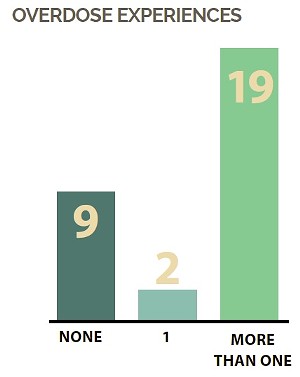
This graphic shows how many of the thirty opioid users interviewed for the report have overdosed.
Denver Public Health & Environment
• Support programs that prioritize housing, with an emphasis on making them low-threshold and supportive, including affordable housing plans.
• Facilitate collaboration between treatment agencies and housing providers to reduce the number of people returning to homelessness following inpatient treatment services.
Treatment and Recovery
• Work in collaboration with state initiatives to increase the availability of a wide variety of low-barrier treatment options accessible on demand.
• Identify ways to provide funding to treatment agencies to employ people with lived experiences surrounding substance-use disorders and homelessness.
• Identify and encourage the development of treatment programs that address polysubstance use, rather than focusing specifically on one drug.
• Encourage other counties in the Denver metro area to provide medication-assisted treatment in jails.
• Support the funding of treatment programs that address contributing factors to substance use, such as previous traumas.
• Facilitate conversations between treatment providers and recovery agencies to support longlasting recovery for clients.
• Identify innovative funding opportunities to increase the amount of recovery-support services.
Editor's note: The original version of this post incorrectly identified the acronym for syringe access programs; it's been corrected. We've also added new information about final totals of Denver drug overdoses in 2017 as provided by the Department of Public Health & Environment that showed an increase over the previous year.

